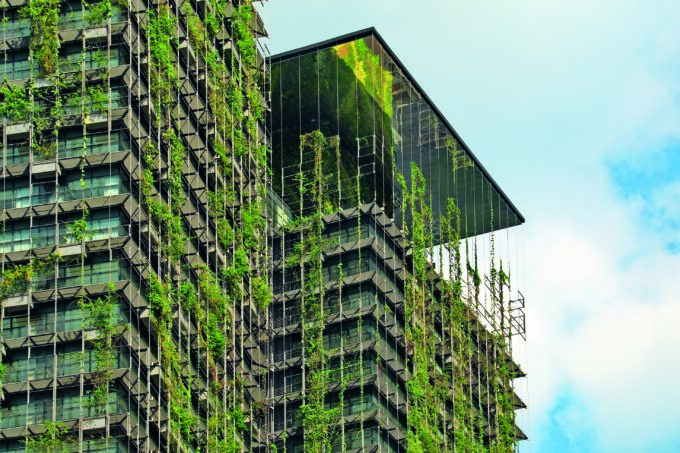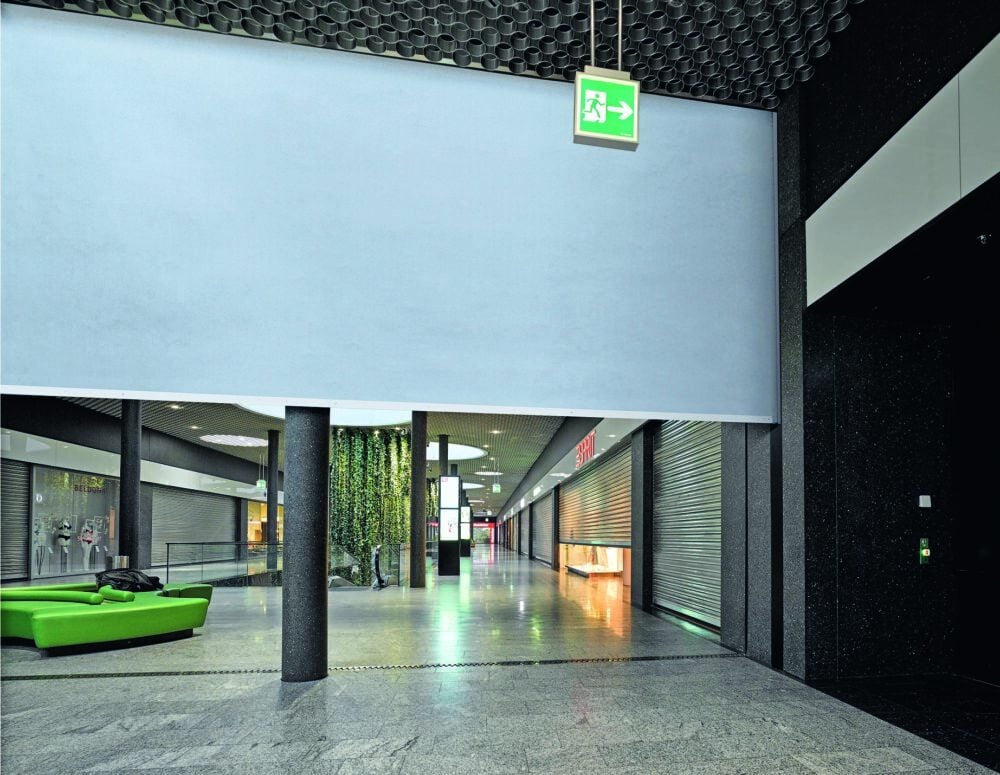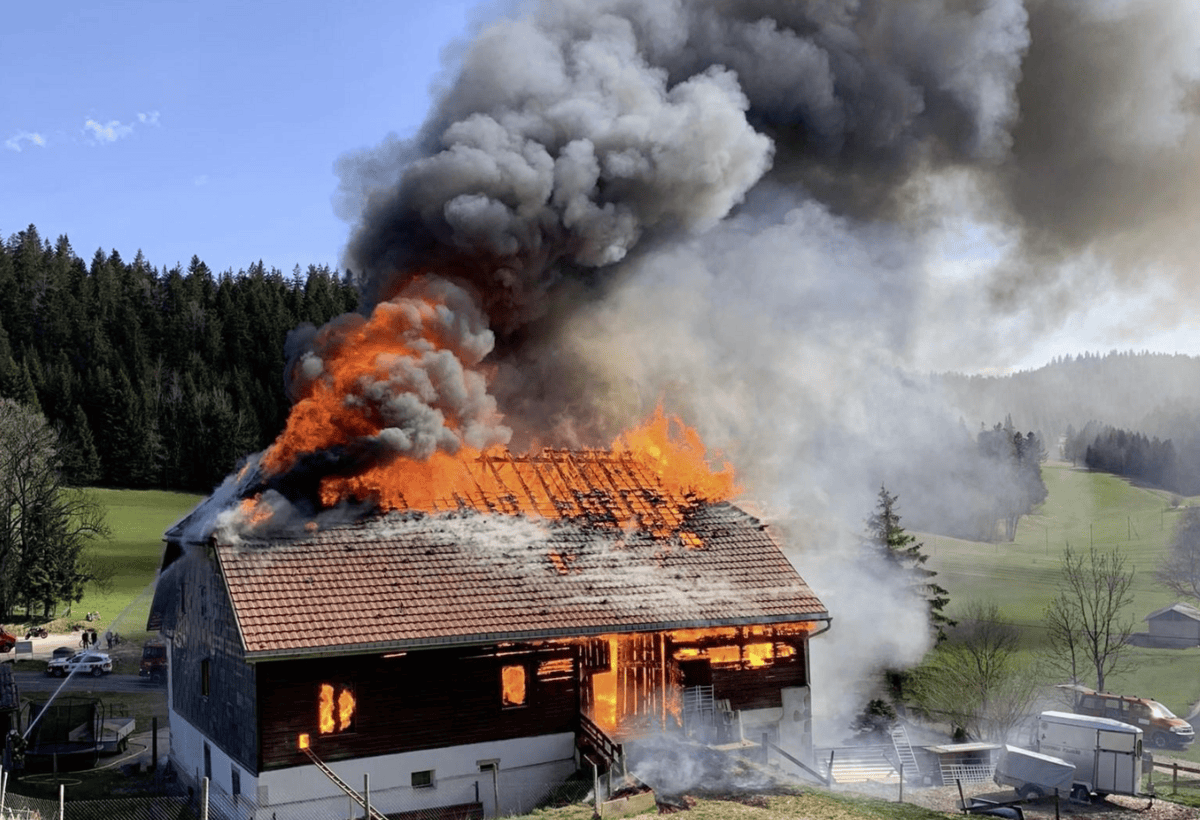Fire protection planning and energy-efficient construction
Switzerland is facing a major challenge: curbing climate change while preparing for future energy needs. In this context, energy-efficient buildings and renewable energies are becoming increasingly important.

High-rise buildings are impressive symbols of modern architecture. They have the potential to be both energy consumers and energy producers. These urban icons can have a significant impact on energy consumption and global warming. At the same time, however, they offer the opportunity to promote energy efficiency through innovative façade design and even generate energy, particularly through the use of solar façades or green façades.
The challenges of combustible facades
There is a noticeable trend in Switzerland: the increasing planning of high-rise buildings with combustible façades. This is particularly noticeable in competitions, where projects with such façades are often considered more spectacular and emerge as winners. These decisions are in line with efforts to meet LEED standards and promote sustainability in the construction industry.
However, the VKF fire protection guidelines clearly state that the exterior walls and exterior wall cladding systems of high-rise buildings must be made of non-combustible building materials. This regulation excludes façades made of wood, PV modules or greenery. But is it still possible to build high-rise buildings with combustible façades? This would undoubtedly be a deviation from the standard concept, in which the protection goals are achieved through prescribed measures, in particular non-combustible façades.
There are two particular challenges with high-rise facades. Firstly, above a certain height, it is no longer possible for the fire department to intervene on the façade. If a fire on a façade rises above this height, it becomes extremely difficult to extinguish the fire and control the flames. This can lead to a rapid spread of fire between floors.
Furthermore, in the case of combustible façades, the effect of combustible materials (be it wood, greenery or PV cabling) must be taken into account as an additional fire load, as they can lead to a potentially higher intensity of the fire event.
The challenge is to determine which alternative fire protection measures can equally achieve the protection objectives for each high-rise building. This requires a thorough analysis and consideration of property-specific characteristics.
In any case, it is crucial that fire protection planning works closely with architects, structural engineers and other specialists to develop customized solutions that take equal account of the sustainability and safety of high-rise buildings.
The importance of early fire protection planning
A well-known saying goes: "If you fail to plan, you plan to fail." This also applies to fire safety planning, especially in projects where flammable façades play a role. Early fire safety planning is crucial as it helps to minimize risks and ensure a quick and effective response to challenges.
To ensure that the project runs smoothly, it is essential to consider the project-specific priorities as early as possible and include them in the planning. This applies in particular to projects that intend to use combustible façades. The identification of potential risks and the development of suitable solutions should already begin in the planning phase.
Close cooperation with the relevant authorities is an essential part of early fire protection planning. It is important to inform the authorities about the project as early as possible in order to eliminate any ambiguities and identify potential weaknesses in the fire protection concept in advance. The project-specific protection goals should already be defined in the pre-project phase. This enables effective, targeted fire protection planning.
Concrete steps for early planning in accordance with the fire protection standard
To facilitate the early planning of a project in accordance with Article 11 of the fire safety standard, the following steps can be taken:
- Definition of protection goals: The protection goals should be defined in close cooperation with the responsible authority in order to create planning security.
- Use of planning aids and experience: It is important to use planning aids and experience from Switzerland and abroad in order to define suitable structural, technical and organizational measures together with the fire protection authority to achieve the protection goals.
- Development of an approvable concept: If the property-specific protection objectives can be achieved, a concept can be drawn up in accordance with Article 11.
- Alternative concepts: If it is impossible to achieve the protection objectives and fire tests or simulations are necessary in the project, a concept in accordance with Article 12 with verification procedures should be pursued.
Available planning aids
There are currently few planning aids that can be used in fire protection planning for projects with combustible façades. This underlines the need to plan combustible high-rise façades carefully and to rely on proven planning aids and specialist knowledge. The VKF leaflet on "Green façades" is currently still being revised. Swissolar plans to publish the transitional document on the planning of PV façades in October 2023 and the corresponding "state of the art" paper in 2024.
Summary
Combustible PV, timber and green façades are critical to future energy efficiency. Their early and appropriate fire safety planning is key to ensuring both the sustainability of our buildings and the safety of our communities. This requires close cooperation with the authorities, the definition of property-specific protection targets and the use of existing and the development of new planning aids. The importance of cooperation between architects, fire protection and energy experts and other professionals cannot be overemphasized. Only through the harmonious interaction of these diverse areas of expertise will it be possible to guarantee both energy efficiency and fire safety at the highest level in the future.
About the author: Anastasia Dimitriadou MSc civil engineer, fire protection expert VKF, Master of Advanced Studies in Fire Safety Engineering ETHZ, senior project manager for fire protection at the Amstein + Walthert AG.









